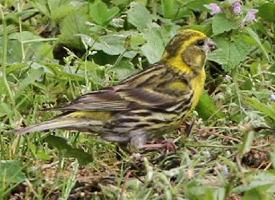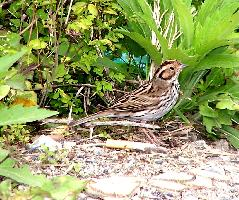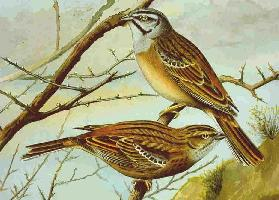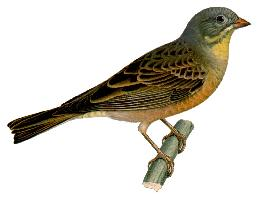
Greutăți și măsuri
| Lungime | de la 15 la 17 cm |
|---|---|
| Greutate | 30 g |
Descrierea animalului
The Yellowhammer (Emberiza citrinella) is a captivating passerine bird that is a member of the bunting family Emberizidae, which graces much of Europe and parts of Asia with its presence. This small yet striking bird is easily recognizable by its vibrant yellow and brown plumage, which not only provides it with its common name but also makes it a favorite among bird watchers and nature enthusiasts.Adult Yellowhammers typically measure between 15 to 17 cm in length, with a wingspan ranging from 23 to 29.5 cm. Males are particularly notable for their bright yellow underparts and head, beautifully contrasted with rich brown back, wings, and tail that are marked with darker streaks. The intensity of the yellow coloration can vary among individuals and is more pronounced in males, especially during the breeding season. Females and juveniles, while still showing yellow, tend to have a more subdued coloration, with more pronounced brown streaking and a less vibrant yellow hue, providing them with better camouflage against predators.
One of the most charming aspects of the Yellowhammer is its song, a distinctive and melodious sequence of notes that often ends with a characteristic 'little-bit-of-bread-and-no-cheese' phrase. This song is predominantly delivered by males from a high perch, serving as both a territorial claim and a means to attract a mate. The bird's call, a short and sharp 'chit', is also commonly heard, used by both sexes as an alarm or contact call.
Yellowhammers are predominantly ground feeders, foraging for seeds, grains, and insects among the undergrowth and open fields. Their diet adapts seasonally; they rely more heavily on invertebrates during the breeding season to provide a protein-rich diet for their chicks. The bird's foraging behavior is often observed in agricultural fields, hedgerows, and woodland edges, highlighting its adaptability to various habitats.
The breeding season for Yellowhammers begins in late April, with the construction of a well-hidden nest on the ground, often in dense vegetation or at the base of a bush or hedge. The female is primarily responsible for building the nest and incubating the eggs, though the male plays a vital role in feeding and protecting the nest. Typically, Yellowhammers will raise two, sometimes three, broods of chicks during the breeding season, with each brood consisting of 3 to 5 eggs.
Despite its beauty and the joy it brings to many, the Yellowhammer has faced challenges in recent years, particularly in parts of its range where intensive farming practices have led to habitat loss. Changes in agricultural land use, including the removal of hedgerows and the increased use of pesticides, have resulted in declines in both their numbers and the range of habitats they occupy. Conservation efforts are therefore crucial to ensuring the survival of this species, focusing on the preservation of their natural habitats and the promotion of farming practices that are sympathetic to the needs of wildlife.
In conclusion, the Yellowhammer is a bird of both beauty and interest, from its striking yellow plumage and melodious song to its adaptation to various habitats and the challenges it faces in the modern world. It remains a symbol of the countryside and a reminder of the importance of conservation efforts to protect our natural world.
Animale similare
Fotografii noi cu animale
Top 10 animale
- Diana monkey (Cercopithecus diana)
- Dolphin gull (Leucophaeus scoresbii)
- Galápagos tortoise (Geochelone nigra complex)
- Moustached guenon (Cercopithecus cephus)
- Japanese spider crab (Macrocheira kaempferi)
- Colossal squid (Mesonychoteuthis hamiltoni)
- Fox tapeworm (Echinococcus multilocularis)
- Stone loach (Barbatula barbatula)
- Japanese macaque (Macaca fuscata)
- Barbary macaque (Macaca sylvanus)


